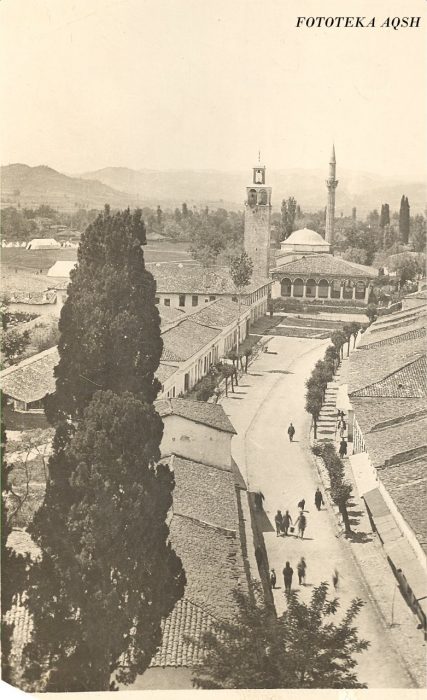
- Permbajtja
- prev
- next
- prev
- next
Tirana 100 year capital, Historical-urban evolution by Ana Shpuza
What do you know about Tirana? How did it evolve under the most important political and economic developments for more than 100 years? How did these developments shape the city?
Today, we suggest you a book which talks about the city’s journey from its beginnings up to the present days, focusing on the historical and urban developments of Tirana since its genesis. Conceived as a book to experience the city through urban walks in key historical epochs, that at the same time serve as a cultural guide to know the capital better.
The book is entitled "Tirana 100 years as capital, the historical-urban evolution of the city " written by Ana Shpuza, as the finalization of her thesis research work started during the university years.
Ana is an architect graduated in Italy, at the Faculty of Architecture in the Turin Polytechnic University. Precisely her curiosity to get in touch with her roots, as she was born in Tirana but lived abroad for most of her childhood, pushed her to focus the thesis in Tirana, to explore and know more in depth her hometown, as a way to explore and connect with her origins. This is materialized in the book "Tirana 100 years the capital", thanks to the support of the director of the Italian Institute of Culture, Mrs. Alessandra Bertin.
Accompanied by photographs, sketches and urban plans, you will experience Tirana in each period since its inception, that appears in the first documents of the XV century found in the Turkish administration archives, when its existence is presented as a group of villages with 4-5 houses up to this day, a poly-centric capital, which houses more than 1/3 of the Albanian's population. A complex development where the traces of historical-political developments have marked the capital's urban texture.
Tirana is described as a picturesque city, loved by its citizens, characterized by very beautiful mosques and lush gardens by the Austrian travelers JGvon Han and the French H. Hecquart. A vision that seems so far away from nowdays Tirana! To better understand the factors that have brought us here today, the book will help you understand the whole course of these transformations. Its development in the XVI-th century, as a center of economic importance, made possible the foundation of the city by Sulejman Pasha Bargjini, in 1614, with an organic layout of ottoman style houses.
Tirana then underwent radical transformations, that came about after important historical events such as the declaration of independence of Albania, proclamation of Tirana as the capital and the many political regime's ideologies.

As an example, after coming to power, Ahmet Zogu sought to create an image of a western capital based on the experience of Italian architects and engineers, who brought their world known architectural and urban craft and tradition, avant-garde to what the city's fabric had at the time. This is clearly noticeable from the urban plans and the buildings architecture built during this period.
The regime change with the communist party after the second world war, brought new urban and architectural trends in line with the ideology of the political agenda, which often meant erasing the city's architectural memory, in particular buildings with Ottoman influence and during the monarchy.
The fast urban development that occurred after the 1990s, found the city's authorities unprepared and with major lack of urban rules and plans. A period which marked the chaotic and sporadic development of the city, consequences of which continue today.
The urban planning of last decades such as the revitalization of Skanderbeg Square, the New Boulevard and the masterplan Tirana 2030, promise a modern and poly-centric city.
In fact, a crucial call is cited in the preface of the book, written by Professor Riccardo Bedrone:
“Preserving the memory of the city is a necessity, because in the thousands of years of history of the people themselves, above all the Mediterranean ones, the future is found”
Thus, our city's history should guide its future to ensure a memorable and stable development that doesn't fall in the same mistakes of erasing the history materialized in our city through time with the risk of creating of a foreign city which does not belong to its citizens.
All this information is broadly analysed in the book, providing inclusive information from all the development stages of the city.
An interesting part of the book worth mentioning is precisely the segment of "urban walks" which beautifully express the urban developments and architecture, by visualizing the styles and history of city's through the most iconic buildings in each period.
"Tirana 100 anni Capitale" by Ana Shpuza, supported by the Italian Institute of Culture, Toena Publications is available at Adrion bookstore and accessible for all Pik Ark readers! (One little thing, you will need to know some Italian)